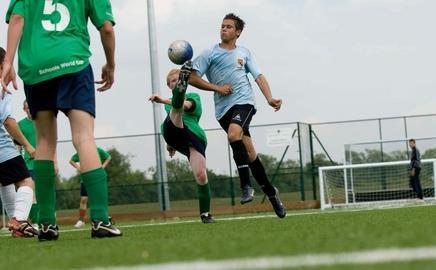TigerTurf has made artificial turf for sports, leisure and landscaping in the UK since 2001.
The family-owned parent company, which is based in New Zealand, was founded by an ex-cricketer in 1981 and also has operations in Australia and the US. It employs 200 people worldwide, with a turnover of about £25m. The UK accounts for 60 of these employees and about a third of the turnover. Bryn Lee, UK managing director, talks about his growing product range, the importance of quality and the regulatory bodies that affect his business.
Describe your market
It is divided into three parts: sport, which includes hockey, football, rugby, cricket, tennis and bowls; landscapes, which includes roundabouts, central reservations, balconies, patios, shop floors and children’s play areas; and export, which is all of the above to Europe, the Middle East and Africa. The UK is a bit behind the times. In Spain, we’ve supplied 400 fields, compared with 40 here.
Describe your competition and obstacles
We’re the biggest company by a long way but our most significant direct competition in the UK is from Domo Sports Systems.
The main obstacle we face, however, is ignorance. Things have come a long way since QPR, Luton Town, Oldham Athletic and Preston North End ripped up their rubbish artificial turf pitches in the eighties. But the FA still won’t allow professional football matches to be played on artificial surfaces, despite Fifa’s approval.
There’s a lobby that says if you’ve got grass, it should be preserved. But only professional clubs can afford good groundsmen. Our biggest market is in the huge amateur, education and local authority sectors.
What are the pros of artificial surfaces?
You can play on our surfaces every day of the year, whereas on natural surfaces there are gaps for maintenance. Studies have shown that football is played exactly the same on artificial surfaces as it is on grass. There are also positive implications for the environment. In California, the installation
of natural turf has been banned within a certain distance of the sea as elements of it can permeate the soil and erode the coastline. Also, in our production process, we use recycled or reused materials for virtually everything. Yarn is melted down, cardboard is reused and old turf is reconditioned.
Tell us about your high-profile contracts
Exeter Rugby Club recently built a multimillion-pound complex that incorporated two of our systems, Brock and Rugby 65. They cater for shock absorption, drainage and insulation against frost. For an 8,000m2 pitch, this was worth £160,000 to us.
Another project, which is under construction, is for the Complete Football academy at Newcastle racecourse. We’re supplying Brock for a full-size, 9,000m2 pitch and six five-a-side pitches, each of 700m2. This is worth £450,000.
Which market sectors are busy?
Education is always busy. And we’re getting more and more enquiries from garden centres and landscape architects. We’re actually getting lots of work from owners of small houses, who don’t have room for sheds so want something that’s maintenance-free.
Football accounts for about 20% of our sales – and this looks set to rise to 50% within a couple of years. At the moment, though, the largest sector is multifacility sports surfaces, excluding football and hockey, which require special conditions.
What has had the biggest impact on product development and the sector?
Growth in the soccer market. Until two or three years ago, the sport hadn’t paid much attention to us but now it’s started to look at us and it’s affecting tenders. This started with Fifa and it’s growing elsewhere.
At youth level, our surfaces are being used for the FA academy scheme. There’s a continual need to replace old pitches with something that reduces injuries.
What are your lead times?
From order to project completion, it takes about 12 weeks, four weeks of which is manufacturing time.
Topics
Specifier 18 May 2007
- 1
- 2
- 3
- 4
- 5
- 6
- 7
- 8
- 9
- 10
- 11
- 12
- 13
- 14
- 15
 Currently reading
Currently readingTurf’s up
- 16
- 17

































No comments yet